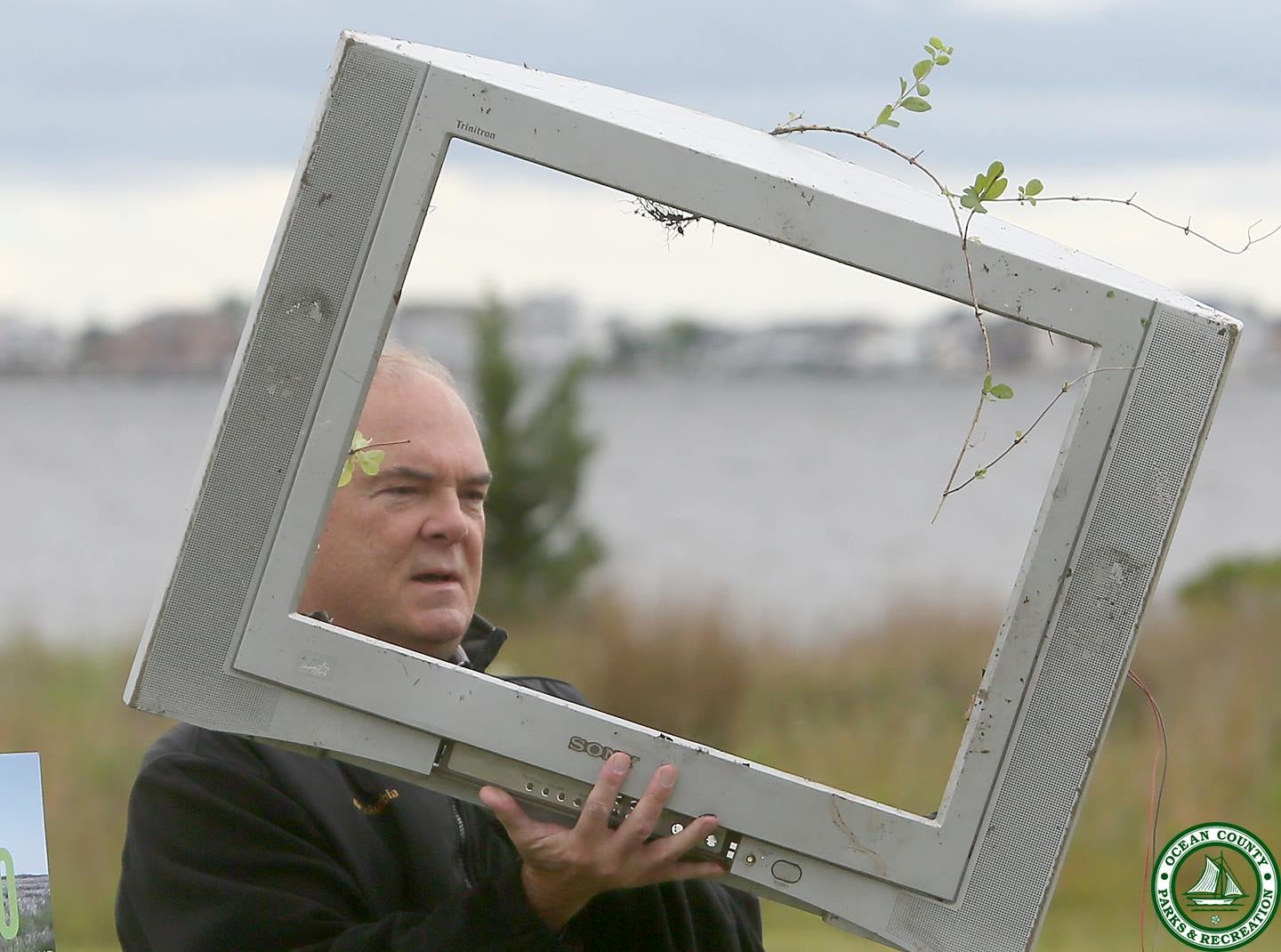Thousands collect garbage throughout Barnegat Bay watershed during annual ‘blitz’

NJDEP Commissioner Bob Martin holds up an example of trash removed from the Barnegat Bay watershed on the bayside lawn of the Ocean County Parks and Recreation administration offices in Toms River on Wednesday. (Image: Ocean County Parks and Recreation)
Thousands of volunteers fanned out throughout the Barnegat Bay watershed Wednesday to collect garbage strewn throughout the area.
The 8th annual “Barnegat Bay Blitz” brought together the volunteers, many of them students, to sweep the bay’s 660 square mile watershed that spans all or parts of 37 municipalities in Ocean and Monmouth counties, according to a New Jersey Department of Environmental Protection news release.
Teams targeted wetlands, stream banks, storm water discharge points, school, trails docks, areas around bulkheads, and the bayshore. Since the first blitz in October 2011, more than 27,000 volunteers have removed nearly 4,200 cubic yards of trash and recyclables.
“The Barnegat Bay Blitz is a tradition that unites people of all ages and backgrounds in a common goal – protecting Barnegat Bay,” NJDEP Commissioner Bob Martin said in the release.
A University of Delaware study conducted for the nonprofit Barnegat Bay Partnership estimates that the watershed and activities related to its natural resources contribute more than $4 billion to the state’s economy annually and directly or indirectly support more than 60,000 jobs.
The state says the long, shallow, and narrow Barnegat Bay is susceptible to stormwater runoff impacts and refuse accumulation that degrade the waterway’s ecological and scenic values.
The key to protecting the sensitive bay, Martin says, is to foster stewardship.
“Our hope is that those who are unable to take part in the cleanups are inspired by them – and especially by the enthusiasm shown by our youth – to care for and treasure this unique resource,” he said.
WHYY is your source for fact-based, in-depth journalism and information. As a nonprofit organization, we rely on financial support from readers like you. Please give today.

